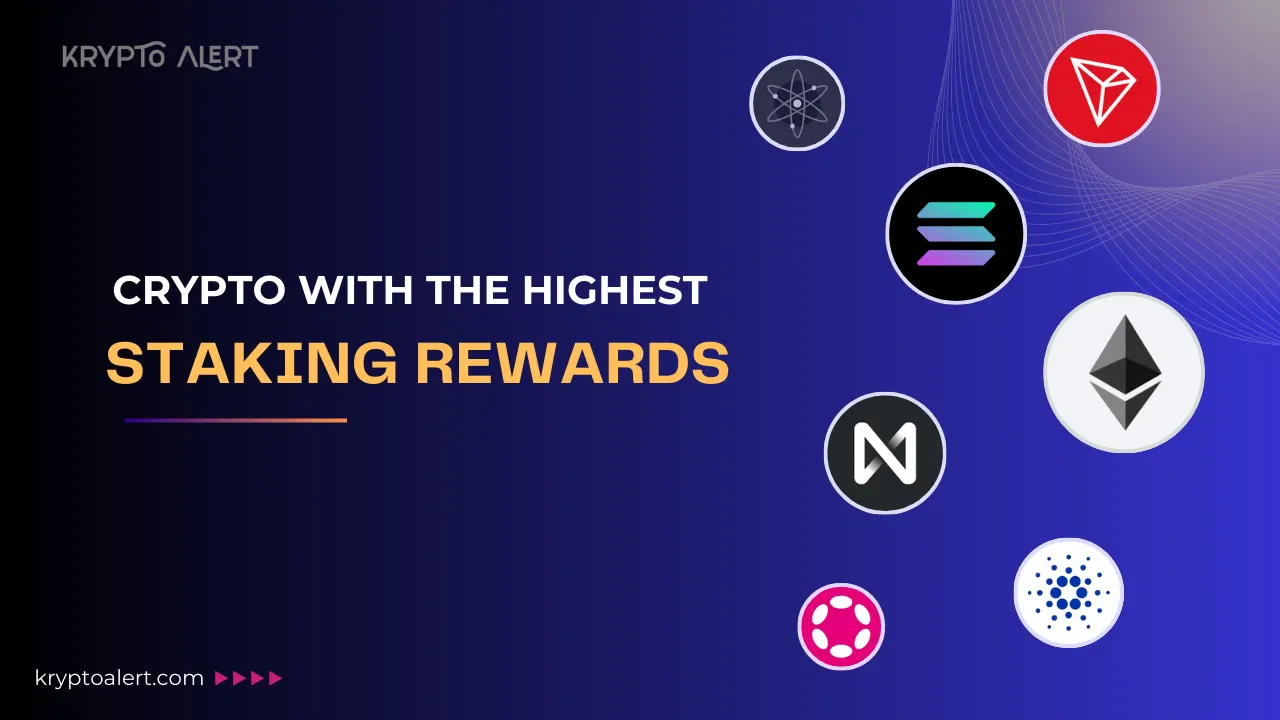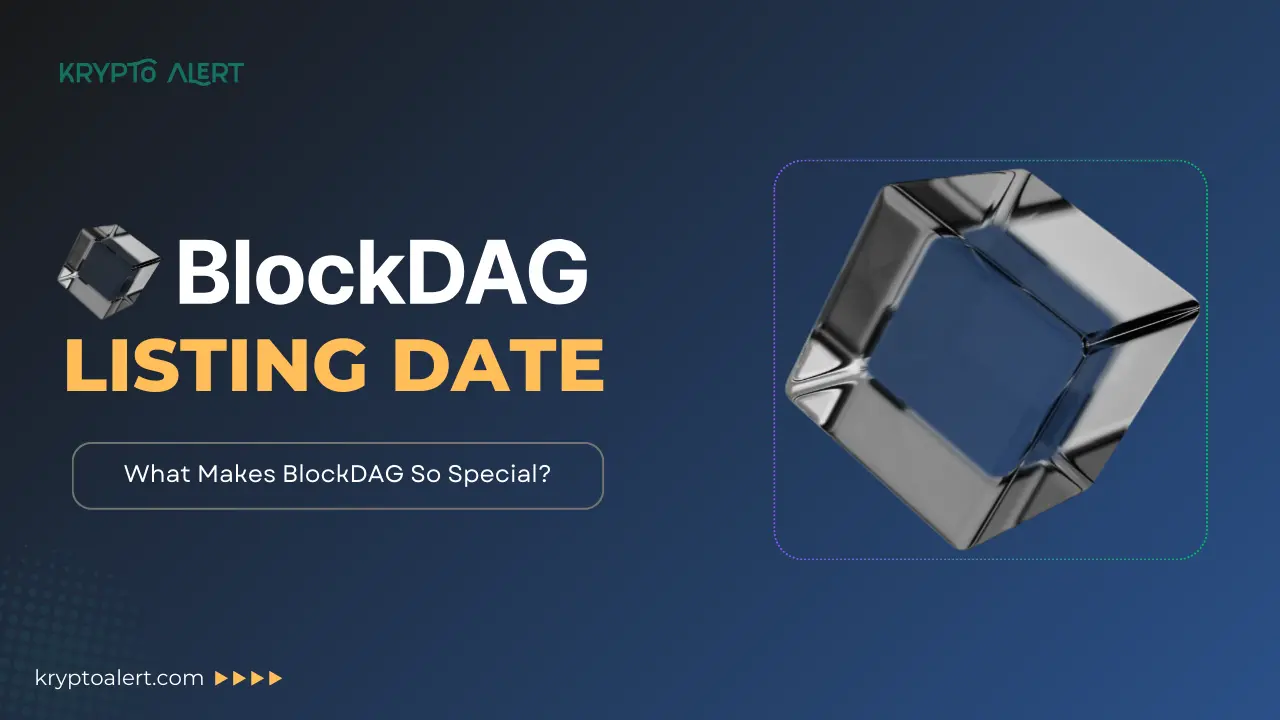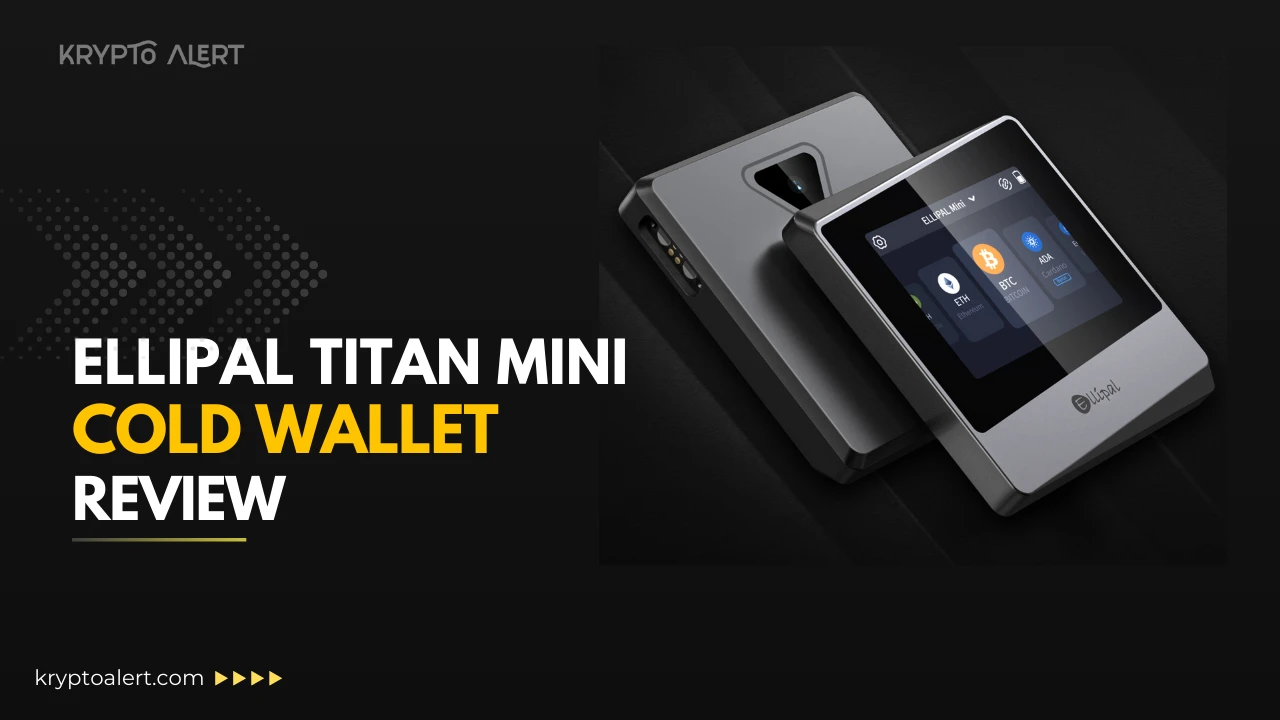Crypto staking remains a top strategy for earning passive income in the cryptocurrency market. By locking up assets to support blockchain networks, investors can earn rewards while contributing to network security and decentralization. With the crypto landscape evolving, 2025 presents exciting opportunities for high staking rewards. In this article, we will explore the best cryptocurrencies with the highest staking rewards in 2025, how staking works, and what you need to know to get started.
Table of Contents
- What is Staking in Cryptocurrency?
- How Does Staking Work?
- Factors to Consider When Choosing Cryptocurrencies for Staking
- Top Cryptos with the Highest Staking Rewards
- Detailed Overview of Each Staking Crypto
- Best Platforms for Staking in 2025
- Benefits & Risks of Crypto Staking
- Tips for Maximizing Staking Rewards
- FAQs on Crypto Staking
- Conclusion: Best Staking Crypto for 2025
What is Staking in Cryptocurrency?
Staking is the process of holding and locking up a certain amount of cryptocurrency in a wallet to support the operations of a blockchain network. In return, stakers earn rewards, usually in the form of additional cryptocurrency. Staking is a key component of Proof of Stake (PoS) and other consensus mechanisms that aim to be more energy-efficient than Proof of Work (PoW).
How Does Staking Work?
When you stake your cryptocurrency, you are essentially participating in the network’s consensus mechanism. Here’s a simplified breakdown of how staking works:
- Choose a Cryptocurrency: Select a cryptocurrency that supports staking.
- Set Up a Wallet: Use a compatible wallet to hold your crypto.
- Delegate or Run a Node: Depending on the network, you may need to delegate your coins to a validator or run your own node.
- Lock Your Coins: Your coins are locked up for a certain period.
- Earn Rewards: You earn staking rewards based on the amount you staked and the network’s rules.
Factors to Consider When Choosing Cryptocurrencies for Staking
To select the best cryptocurrencies for staking, evaluate these factors:
- Staking Rewards (APY): Higher APYs offer better returns but may involve more risk.
- Network Stability: Established networks like Ethereum or Cardano are safer than newer projects.
- Token Inflation: High inflation can erode the value of rewards despite high APYs.
- Lock-Up Periods: Some programs lock funds, reducing liquidity.
- Platform Security: Choose platforms with robust security, such as cold storage and 2FA.
- Tax Implications: Staking rewards may be taxed as income, so check local regulations.
With these in mind, let’s explore the top cryptocurrencies with the highest staking rewards in 2025.
Top Cryptos with the Highest Staking Rewards
Below is a comparison of the top staking cryptocurrencies, their expected APY, and where you can stake them.
Comparison Table: Best Staking Cryptos in 2025
| Rank | Cryptocurrency | APY (Annual Percentage Yield) | Where to Stake | Staking Type |
|---|---|---|---|---|
| 1 | Polkadot (DOT) | 7-15% | Binance, Kraken, Nova Wallet | Nominated Proof-of-Stake (NPoS) |
| 2 | Cosmos (ATOM) | 9-15% | Keplr Wallet, Binance, Kraken | Delegated Proof-of-Stake (DPoS) |
| 3 | Avalanche (AVAX) | 9-11% | Avalanche Wallet, Binance | Proof-of-Stake (PoS) |
| 4 | Near Protocol (NEAR) | 10-12% | NEAR Wallet, Binance | Proof-of-Stake (PoS) |
| 5 | Ethereum (ETH) | 3-7% | Lido, Kraken, Coinbase | Proof-of-Stake (PoS) |
| 6 | Cardano (ADA) | 4-6% | Daedalus, Binance, Kraken | Proof-of-Stake (PoS) |
| 7 | Solana (SOL) | 8-11% | Phantom Wallet, Binance | Proof-of-Stake (PoS) |
| 8 | Tezos (XTZ) | 5-7% | Coinbase, Binance | Liquid Proof-of-Stake (LPoS) |
| 9 | Polygon (MATIC) | 5-14% | Polygon Wallet, Binance | Proof-of-Stake (PoS) |
| 10 | Tron (TRX) | 5-7% | TronLink Wallet, KuCoin | Proof-of-Stake (PoS) |
Detailed Overview of Each Staking Crypto
1. Ethereum (ETH)
As the second-largest cryptocurrency by market cap, Ethereum transitioned to a Proof-of-Stake (PoS) consensus mechanism in 2022, making staking a core feature. With a robust ecosystem of decentralized applications (dApps) and a Total Value Locked (TVL) exceeding $47 billion, Ethereum is a reliable choice for staking.
- Staking Reward: ~3-7% annually
- Minimum Staking Amount: 32 ETH
- Lock-Up Period: Indefinite
- Where to Stake: Lido, Kraken, Coinbase
- Highlights: The second-largest cryptocurrency, but requires 32 ETH to run a full validator.
| 👍 Pros | 👎 Cons |
|---|---|
| High security, widespread adoption, flexible staking options. | High gas fees during network congestion, validator node requires significant investment. |
2. Solana (SOL)
Solana is known for its high-speed blockchain, processing thousands of transactions per second with low fees. Its scalability and growing ecosystem of DeFi and NFT projects make it a top choice for staking in 2025.
- Staking Reward: ~8-11% annually
- Minimum Staking Amount: No minimum
- Lock-Up Period: None
- Where to Stake: Phantom Wallet, Binance
- Overview: Solana is known for its high-speed transactions and low fees. Staking SOL helps secure the network and earns you rewards.
| 👍 Pros | 👎 Cons |
|---|---|
| High throughput, low transaction costs, user-friendly staking. | Network outages in the past, though improvements are ongoing. |
3. Cosmos (ATOM)
Cosmos aims to create an “Internet of Blockchains” by enabling interoperability. Its high staking rewards and decentralized wallet options make it attractive for 2025.
- Staking Reward: ~9-15% annually
- Minimum Staking Amount: No minimum
- Lock-Up Period: 21 days
- Where to Stake: Keplr Wallet, Binance, Kraken
- Overview: Cosmos aims to create an “Internet of Blockchains.” Staking ATOM helps secure the network and earns you rewards.
| 👍 Pros | 👎 Cons |
|---|---|
| High APY, flexible staking, growing ecosystem. | High token inflation may reduce real rewards. |
4. Polkadot (DOT)
Polkadot’s interoperable ecosystem connects multiple blockchains, making it a cornerstone of Web3. Its high APY and active development make it a top staking choice.
- Staking Reward: ~7-15% annually
- Minimum Staking Amount: No minimum, but higher amounts have better chances of being selected
- Lock-Up Period: 28 days
- Where to Stake: Binance, Kraken, Nova Wallet
- Overview: Polkadot’s staking mechanism is designed to be highly secure and scalable. Rewards are distributed based on the amount staked and the validator’s performance.
| 👍 Pros | 👎 Cons |
|---|---|
| High APY, innovative interoperability, active developer community. | Complex staking process for beginners, price volatility. |
5. Cardano (ADA)
Cardano’s energy-efficient PoS algorithm and research-driven approach make it a favorite for conservative investors. Its scalability and secure smart contract platform support a growing number of dApps.
- Staking Reward: ~4-6% annually
- Minimum Staking Amount: No minimum
- Lock-Up Period: None
- Where to Stake: Trust Wallet, Binance, Kraken
- Overview: Cardano uses a unique PoS mechanism called Ouroboros. ADA staking is fully liquid, meaning you can unstake anytime.
| 👍 Pros | 👎 Cons |
|---|---|
| Low energy consumption, no lock-up period, strong community. | Limited dApp adoption compared to Ethereum, slower development pace. |
6. Avalanche (AVAX)
Avalanche is a fast, low-cost blockchain supporting smart contracts and dApps. Its staking rewards and developer-friendly ecosystem make it a strong contender.
- Staking Reward: ~9-11% annually
- Minimum Staking Amount: 25 AVAX
- Lock-Up Period: Flexible (minimum 2 weeks)
- Where to Stake: Avalanche Wallet, Binance
- Overview: Avalanche is designed for high throughput and low latency. Staking AVAX helps secure the network and earns you rewards.
| 👍 Pros | 👎 Cons |
|---|---|
| High performance, growing DeFi ecosystem, competitive APY. | High validator staking requirement (2,000 AVAX) may deter some users. |
7. Polygon (MATIC)
- Staking Reward: ~5-14% annually
- Minimum Staking Amount: No minimum
- Lock-Up Period: None
- Where to Stake: Polygon Wallet, Binance
- Overview: Polygon is a Layer 2 scaling solution for Ethereum. Staking MATIC helps secure the network and earns you rewards.
| 👍 Pros | 👎 Cons |
|---|---|
| High throughput, low transaction costs, user-friendly staking. | Network outages in the past, though improvements are ongoing. |
8. NEAR Protocol (NEAR)
- Staking Reward: ~10-12% annually
- Minimum Staking Amount: No minimum
- Lock-Up Period: None
- Where to Stake: NEAR Wallet, Binance
- Overview: NEAR Protocol is a decentralized platform designed for scalability and usability. Staking NEAR helps secure the network and earns you rewards.
| 👍 Pros | 👎 Cons |
|---|---|
| High throughput, low transaction costs, user-friendly staking. | Network outages in the past, though improvements are ongoing. |
9. TRON (TRX)
- Staking Reward: ~5-7% annually
- Minimum Staking Amount: No minimum
- Lock-Up Period: 3 days
- Where to Stake: TronLink Wallet, KuCoin
- Overview: TRON is a blockchain platform focused on decentralized applications and content sharing. Staking TRX helps secure the network and earns you rewards.
| 👍 Pros | 👎 Cons |
|---|---|
| High throughput, low transaction costs, user-friendly staking. | Network outages in the past, though improvements are ongoing. |
10. Tezos (XTZ)
Tezos is a self-upgrading blockchain with a focus on governance and sustainability. Its staking process, known as “baking,” offers competitive rewards
- Staking Reward: ~5-7% annually
- Minimum Staking Amount: No minimum
- Lock-Up Period: None
- Where to Stake: Coinbase, Binance
- Overview: Tezos uses a liquid PoS mechanism, allowing stakers to participate without locking up their coins. Rewards are distributed every three days.
| 👍 Pros | 👎 Cons |
|---|---|
| Self-upgrading protocol, low entry barriers, community-driven. | Lower APY compared to newer projects, moderate adoption. |
Best Platforms for Staking in 2025
Select a platform that aligns with your needs. Here are top staking platforms for 2025:
| Platform | Supported Coins | Key Features | Fees |
|---|---|---|---|
| Binance | 300+ (ETH, BNB, NEAR, TRX) | High APYs, auto-staking | Varies |
| Coinbase | 152 (ETH, SOL, ADA) | User-friendly, insured | 25-35% |
| OKX | 100+ (ETH, NEAR) | ETH 2.0 staking, airdrops | Low |
| Best Wallet | 50+ blockchains | Self-custodial, no KYC | Minimal |
| Uphold | 19 (ATOM, SOL) | Flexible staking, weekly payouts | 20-25% |
Benefits & Risks of Crypto Staking
✅ Benefits of Staking Crypto
- Earn Passive Income: Generate rewards without active trading.
- Support the Network: Stakers help secure and validate transactions.
- Compounding Rewards: Earn more over time as rewards reinvest.
- Low Entry Barrier: No need for expensive mining equipment.
❌ Risks of Staking Crypto
- Validator Fees: Staking pools take a cut from rewards.
- Lock-up Periods: Some coins require staking for months.
- Slashing Risks: Bad validators may get penalized.
- Price Volatility: Rewards may not cover losses if the coin’s price drops.
Tips for Maximizing Staking Rewards
- Diversify: Don’t put all your funds into one cryptocurrency.
- Research: Understand the risks and rewards of each crypto.
- Stay Updated: Keep up with network updates and changes in staking rewards.
- Use Reliable Wallets: Ensure your wallet is secure and compatible with staking.
- Consider Delegating: If running a node is too technical, consider delegating your coins to a trusted validator.
FAQs on Crypto Staking
To stake crypto, follow these steps:
Choose a cryptocurrency that supports staking (e.g., Polkadot, Ethereum, Cardano).
Select a staking platform or wallet (e.g., Binance, Kraken, Coinbase, or dedicated wallets like Daedalus for Cardano).
Delegate or stake your tokens to a validator or staking pool.
Earn rewards based on the APY of the chosen cryptocurrency.
As of 2025, Solana (SOL) and Cosmos (ATOM) offer some of the highest staking rewards, ranging from 10% to 14% APY. Polkadot(DOT) and Near Protocol (NEAR) also provide high staking returns.
It depends on the cryptocurrency:
Flexible Staking: Cardano (ADA), Tezos (XTZ), and Polygon (MATIC) allow unstaking anytime.
Fixed Lock-up: Ethereum (ETH), Avalanche (AVAX), and Polkadot (DOT) require a waiting period before you can withdraw staked funds.
Staking is generally safe, but risks include:
Slashing penalties if validators act maliciously (common in Polkadot and Cosmos).
Platform security risks if staking on centralized exchanges (e.g., Binance, Kraken).
Price volatility, where the value of the staked crypto may decrease over time.
Yes, in most countries, staking rewards are considered taxable income and may be subject to capital gains tax when sold. Always check your local tax laws.
Yes! Many platforms allow you to stake multiple coins simultaneously. This helps diversify risks and maximize passive income.
Conclusion: Best Staking Crypto for 2025
If you’re looking for high rewards, Polkadot (DOT) and Cosmos (ATOM) offer some of the best returns (10-14% APY). If you prefer flexibility, Cardano (ADA) and Tezos (XTZ) allow unstaking at any time.
For long-term growth, Ethereum (ETH) and Solana (SOL) remain strong staking choices, while Avalanche (AVAX) offers high returns with governance participation.
Best Crypto Based on Different Needs
- Best High APY: Polkadot (DOT), Cosmos (ATOM)
- Best Flexible Staking: Cardano (ADA), Tezos (XTZ)
- Best Long-Term Investment: Ethereum (ETH), Solana (SOL)
- Best for Frequent Rewards: Tron (TRX), Avalanche (AVAX)
Staking is a great way to earn passive income while supporting blockchain networks. Make sure to stake through reputable wallets and platforms for the best security and rewards.
Disclaimer: Cryptocurrency investments carry risks, and staking rewards are not guaranteed. Conduct your own research and consult a financial advisor before investing.




Leave a Reply